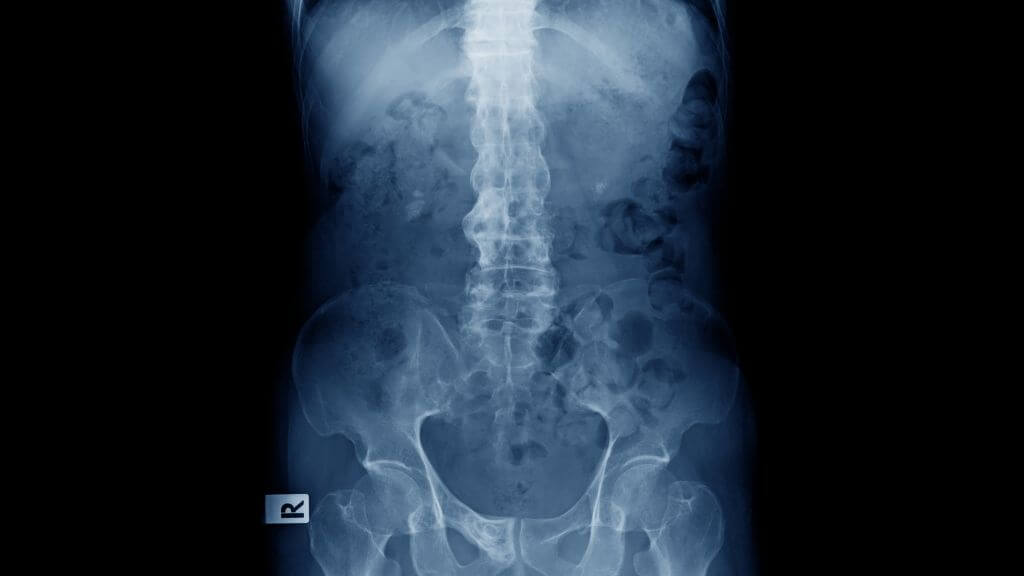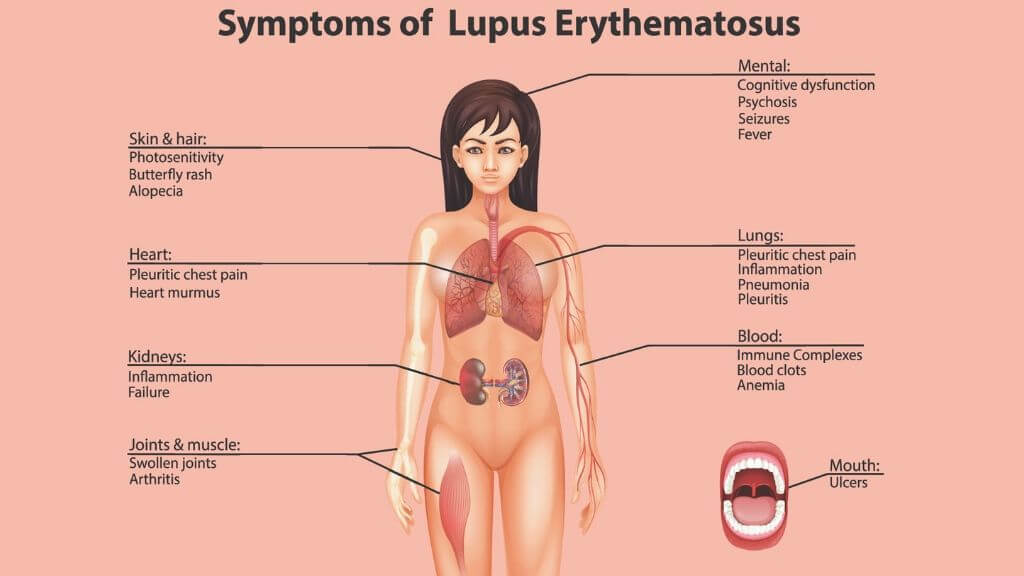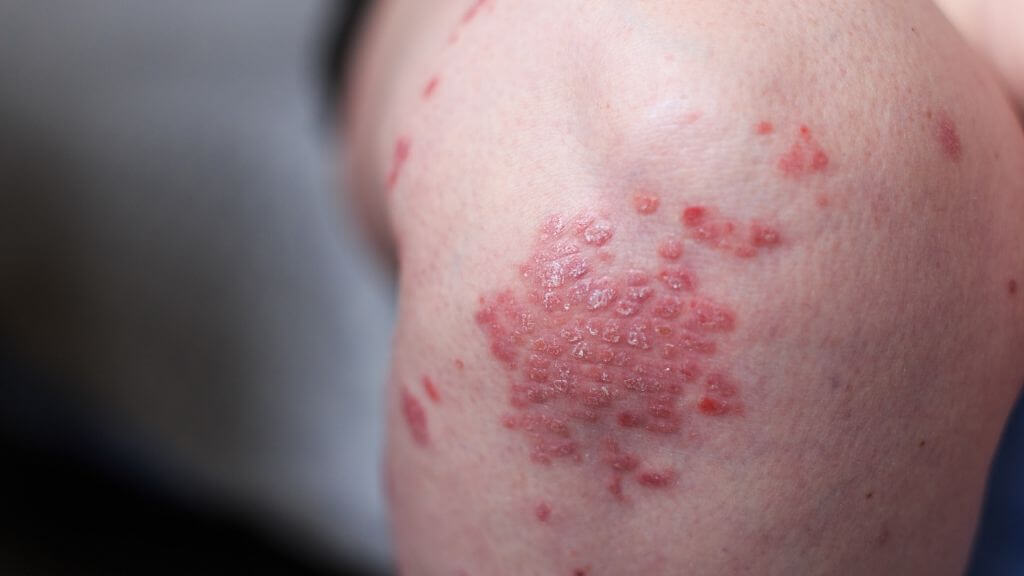Joint pain can occur as a natural part of the aging process, or it can occur as a symptom of a serious health condition. Years of wear and tear naturally break down your joints, inviting inflammation and pain, but most age-related joint pains are mild and don’t interfere with your life.
Joint pain related to an underlying health condition can be more severe, more debilitating, and can affect your mobility and quality of life.
Conditions Associated With Joint Pain
Ankylosing Spondylitis
Arthritis that causes inflammation of the spinal joints causing your vertebrae to become fused is known as ankylosing spondylitis. This makes the spine less flexible and negatively affects posture.
Hip joint pain and lower back pain are the most common symptoms, especially in the morning. Make sure to see a doctor if the pain worsens or awakens you in the middle of the night.
Bursitis
Your bursae are tiny fluid-filled sacs, which cushion the bones and muscles in your joints. Bursitis is the inflammation of these sacs, and it causes severe pain to the affected joint, which is usually the hip, shoulder, or elbow. The condition is often temporary, and resting the joint can alleviate pain and help in the healing process.

Fibromyalgia
This condition is characterized by widespread musculoskeletal pain believed to be linked to the brain’s amplification of pain signals. While not known to cause joint pain, fibromyalgia is associated with painful joint disorders, and conditions are made worse with stress or physical trauma.
Gout
This complex form of arthritis can affect anyone and is characterized by sudden and severe pain. It can appear while you sleep, making your joints very painful upon waking. Gout can affect any joint, but the big toe is typically the first to develop symptoms.
It is important to see your doctor if you have a fever and the joint is hot and inflamed.
Hypothyroidism
An underactive thyroid doesn’t produce enough hormones that are critical for certain body functions. One of the first symptoms to appear with hypothyroidism are stiff and painful joints, and if left untreated, the joint pain can become more severe.
If you notice that you also have constipation, a hoarse voice, a puffy face, and pale skin along with the joint pain, it is time to see your doctor.
Lupus
This autoimmune condition affects many parts of the body, and inflammation of the joints is common. Lupus is difficult to diagnose because the symptoms mimic other conditions, but a tell-tale rash across the face gives it away.

If you have the butterfly rash and severe joint pain, lupus is likely the culprit. There is no cure, but treatments can effectively reduce pain and discomfort.
Lyme Disease
Lyme disease is caused by a bacterial infection spread by deer ticks. A rash is one of the earliest signs, but later on, neurological and joint problems can develop. Bouts of joint pain can occur, especially in your knees, and the pain can shift from one joint to another.
Without prompt treatment, you can develop Lyme arthritis, a more severe and chronic inflammatory joint disease.
Osteoarthritis
Osteoarthritis is the most common form of arthritis affecting millions across the world. It occurs when the protective cartilage in your joints breaks down, which causes bones to rub together. This arthritis mainly affects the hands, knees, hips, and spine but can occur in any joint in the body. The breakdown of cartilage can occur with age and time but also as a result of overuse or injury.
Without treatment, joint pain and stiffness can become severe, negatively impacting mobility and your quality of life.
Paget’s Disease
With the Paget’s Disease condition, your body is not able to recycle as efficiently, and new bone cannot be made in time to replace old bones. This leaves you with brittle and weaker bones that often become misshapen. As a result, you can experience severe joint pain as bones degrade and rub against each other, with the most specific targets being the hips and spine.

Psoriatic Arthritis
This arthritis develops in individuals with psoriasis, a skin condition characterized by red rashes and silvery plaques. The joint pain can appear before the skin rashes and lesions, so monitoring your joint health could help you identify the condition early enough to seek effective treatment.
Joint pain is the most common symptom of this condition and affects many joints, but finger joint pain and spinal pain are the most common.
Rheumatic Fever
This inflammatory disease develops as a complication to strep throat or scarlet fever, which are both caused by a bacterial infection. Rheumatic fever is rare in the United States, but it does still exist. Rheumatic fever causes widespread inflammation, which can lead to swollen and painful joints.
Rheumatoid Arthritis
This chronic inflammatory condition can affect your joints as well as other body systems, including lungs, heart, skin, and blood vessels. Also considered an autoimmune disease, it mistakenly attacks your joints causing chronic inflammation, swelling, and pain. Over time, you can even develop bone erosion and joint deformities.
There is no cure, but with prompt diagnosis, symptoms can be managed with medications and treatments. It is important to see your doctor as soon as you suspect Rheumatoid Arthritis (RA) because once the disease progresses, little can be done to prevent disability.
Rickets
The result of a vitamin D deficiency in children, rickets causes weak and soft bones. Adding vitamin D to the diet can help repair bone strength and restore regular use. If rickets is due to an underlying medical condition, then treatment needs to be sought immediately to address the cause.
Muscle weakness and skeletal deformities are the most common symptoms, but these both contribute to pressure and distortion of joints, which can be painful.

Tendinitis
This is the inflammation or irritation of a tendon (the cord that attaches a bone to a muscle). The joint that is used repeatedly becomes stressed and worn down leading to tenderness, swelling, and pain.
Tendinitis is most common in the shoulders, elbows, wrists, and knees and is almost always caused by overuse and repetitive actions in sports. It can be treated with rest, physical therapy, and pain medications.
Joint Pain Relief
Finding relief for aching joints depends on the cause. If your pain lasts longer than 30 minutes after waking each day and lasts for weeks, then you need to see your doctor.
Identifying the underlying cause can lead to an effective treatment plan to alleviate the pain. Medications for inflammation and pain are typically prescribed. When inflammation is reduced, joint pain is also reduced, and mobility improves.
In addition to medications, you can also try these options to relieve joint pains:
♦ Exercise or physical therapy can help increase joint mobility and can also help promote weight loss, which can relieve joint pressure and pain.
♦ Alternate heat and ice therapy to the affected joints to relieve swelling and inflammation as well as relax muscles to increase circulation to the area.
Joint pain supplements are proven natural options to relieve pain and promote joint health. The best supplement for joint pain is fish oil, which is full of healing omega-3 fatty acids. These fatty acids reduce inflammation and protect against oxidative damage to protect your joints and promote healing. Flaxseed supplements also help to ease joint pain and stiffness, and glucosamine sulfate is important for cartilage care and repair.

Natural Treatment for Joint Pain
Whether your joint pain is from aging or a health condition, there are natural treatment options you can try. Based on the natural substances found in your body, you can add supplemental support to your diet to relieve joint pain and enhance joint health.
When joint pain occurs, inflammation is usually the underlying cause, and there are several ways you can reduce pain by reducing inflammation.
♦ Longvida: This is an optimized curcumin ingredient that benefits inflammatory conditions. Curcumin works to reduce inflammation by inhibiting the activity of pro-inflammatory chemicals. In this way, it can reduce the pain associated with joint problems.
♦ K-Real: Krill oil supplies natural omega-3 fatty acids that are powerful antioxidants and anti-inflammatory agents. Krill oil reduces inflammation and swelling in joints to relieve pain. The healing omega-3 fatty acids also nourish damaged joints to promote healing from within.
♦ Zanthin: Clinically proven natural astaxanthin is another strong anti-inflammatory compound that helps relieve joint pain. The reduction in inflammation also allows for degenerated joints time to heal.
♦ Boswellia serrata: This is a natural healing compound found in Boswellia tree resin. It possesses anti-inflammatory properties and has been proven to reduce joint pain and improve mobility.
Inflammation from joint disorders causes damage to the joints. In addition to reducing inflammation and relieving pain, you also need to enhance joint strength and health. This can be done by supplementing natural substances already found in the body.
Collagen is an essential component of joint cartilage and bone structure. Without this, joints cannot easily move and bones will weaken and become prone to fracture. Joints that are weakened as a result of low collagen are at risk of inflammatory diseases such as arthritis. There are several types of collagen that can benefit joint health, and when combined they provide the most efficient support.
Hyaluronic acid is found naturally in the body as a gel-like substance that cushions joints. Without this, the bones of a joint can rub together causing pain and immobility. Hyaluronic acid supplements can replace any that was lost.
When to Seek Help
If your joint pain comes on very suddenly, you need to speak with your doctor. You also need to consult your doctor if you experience severe pain, rapid swelling, and joint deformities, the inability to move a joint, or redness and heat around the joint.
Because joint pain is common with age, your doctor will need to do a physical exam to determine if there is a different cause for your pain. Any joint pain that persists is worth discussing with your doctor so that tests can be run, a diagnosis can be made, and effective treatment can begin.






